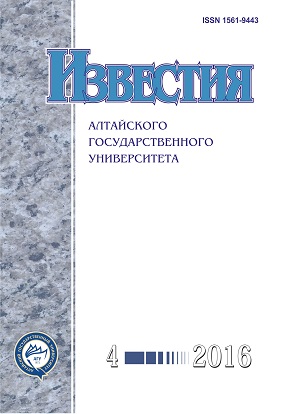Network Cooperation of Higher Educational Institutions of EEU and China Transboundary Space (2010-2016): the Experience of Altai State University and the Association of Asian Universities
Abstract
The article considers one of the modern forms of organizational transformations in the system of higher professional education, which is a network cooperation of higher educational institutions. The authors emphasize the importance of network cooperation in the sphere of higher education and training of scientific specialists as a form of regional integration. The authors have analyzed Altai State University’s experience of network cooperation and provided the examples of effective forms of higher educational institutions’ cooperation in the modern world. Universities network cooperation under modern highly competitive conditions allows consolidating development opportunities for universities of different countries, thus repeatedly increasing intellectual resources, personnel resources, resources of infrastructure, thereby to form a large-scale basis for a new breakthrough in the field of knowledge and technology. On the example of creation and participation in international organizations, hosting of international forums there were distinguished the most effective forms and types of educational cooperation. The results of joint activities which were obtained with the help of cooperation of the universities in the framework of the Association make it possible to fit into political and economic integrational activation processes, which we have been obser ving during the recent years within the framework of international associations (CIS, EAEC, SCO, BRICS). DOI 10.14258/izvasu(2016)4-35Downloads
Metrics
References
Филиппов В.А. Международное сетевое взаимодействие в сфере образования // Вестник РУДН. Серия «Международные отношения». - 2014. - № 3.
Аничкин Е.С. Сетевое взаимодействие вузов: сущность, формы, перспективы // Высшее образование и международное сотрудничество: виды, формы и механизмы: хрестоматия / под общ. ред. С.Г. Максимовой. - Барнаул, 2015.
Молодежные обмены между странами - участниками Шанхайской организации сотрудничества : монография / под ред. С.Г. Максимовой. - Барнаул, 2015.
Пустовой Н.В., Гущина А.М., Некрасов В.В., Цой Е.Б. Концепции международного сетевого взаимодействия как инструмент подготовки кадров высшей квалификации // Университетское образование. - 2013. - № 2.
Евразийское образовательное пространство - новые вызовы и лучшие практики : сборник материалов / под общ. ред. С.В. Землюкова. - Барнаул, 2014.
Итоги приемной кампании // Эксперт Сибирь. - 2014. - № 37-38.
Izvestiya of Altai State University is a golden publisher, as we allow self-archiving, but most importantly we are fully transparent about your rights.
Authors may present and discuss their findings ahead of publication: at biological or scientific conferences, on preprint servers, in public databases, and in blogs, wikis, tweets, and other informal communication channels.
Izvestiya of Altai State University allows authors to deposit manuscripts (currently under review or those for intended submission to Izvestiya of Altai State University) in non-commercial, pre-print servers such as ArXiv.
Authors who publish with this journal agree to the following terms:
- Authors retain copyright and grant the journal right of first publication with the work simultaneously licensed under a Creative Commons Attribution License (CC BY 4.0) that allows others to share the work with an acknowledgement of the work's authorship and initial publication in this journal.
- Authors are able to enter into separate, additional contractual arrangements for the non-exclusive distribution of the journal's published version of the work (e.g., post it to an institutional repository or publish it in a book), with an acknowledgement of its initial publication in this journal.
- Authors are permitted and encouraged to post their work online (e.g., in institutional repositories or on their website) prior to and during the submission process, as it can lead to productive exchanges, as well as earlier and greater citation of published work (See The Effect of Open Access).








